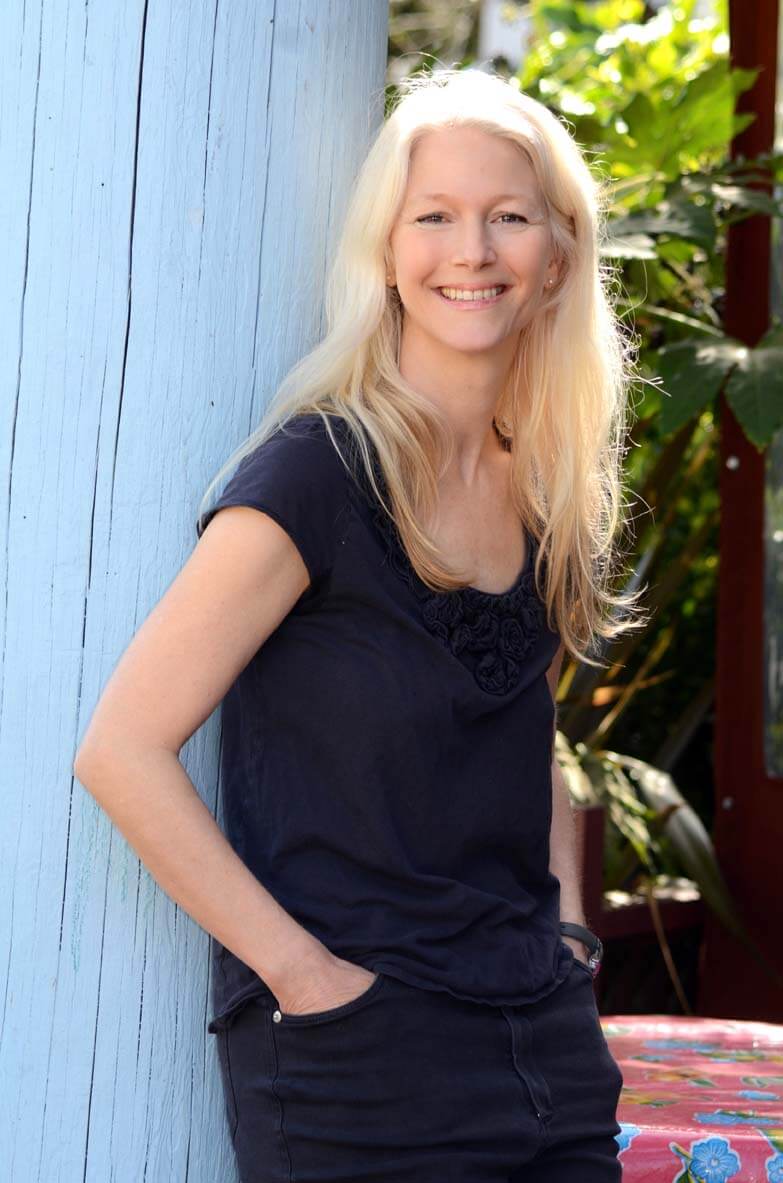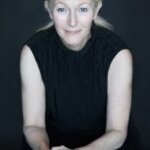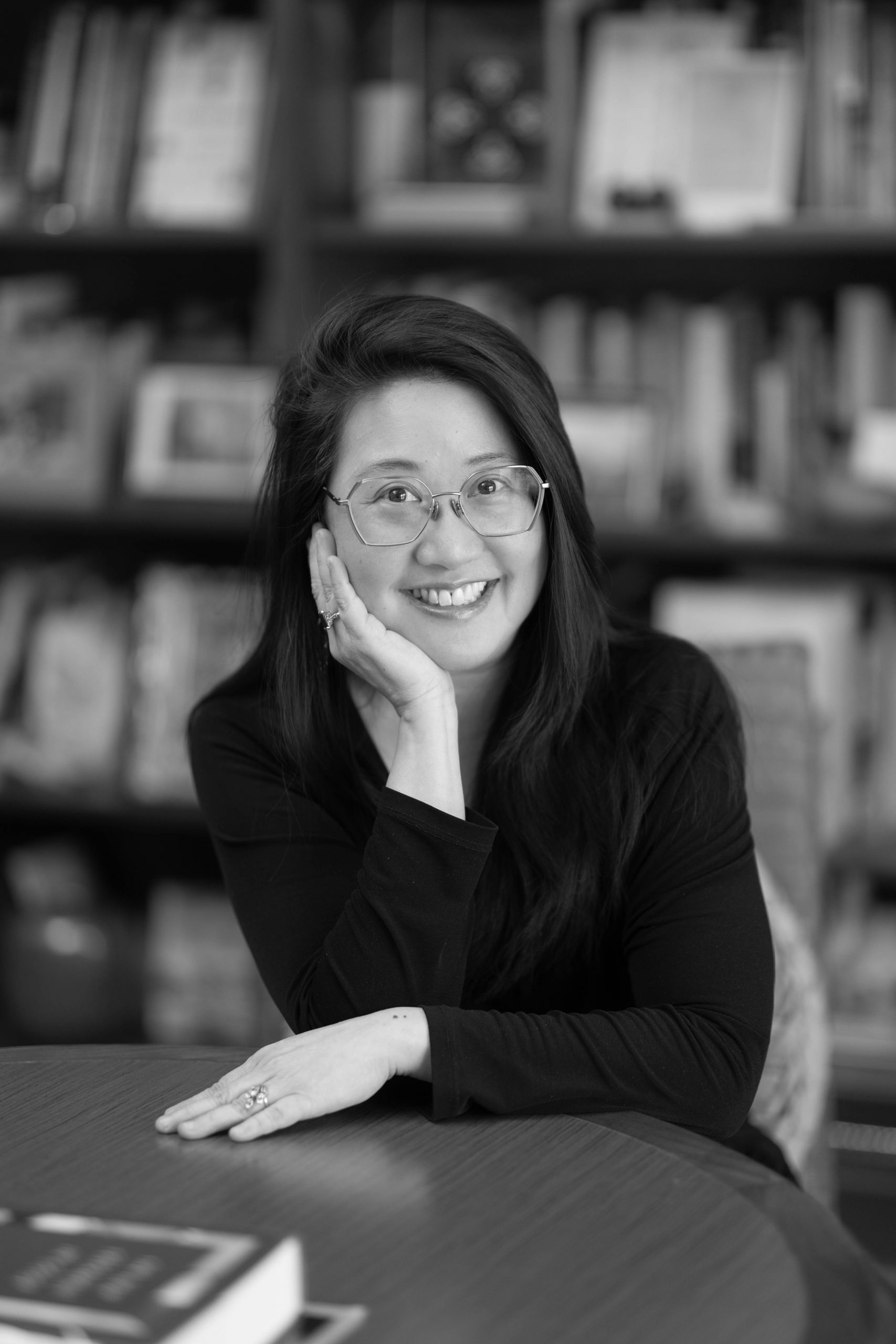
Interview
Nature Has a Voice
Swetha Amit interviews Nina Schuyler
Your book, In this Ravishing World, delves into a series of interconnected stories that tackle the urgent issue of the climate crisis. Could you talk about the personal journey that led to this creation? How long did it take to assimilate it together?
After one of the many California wildfires, Governor Gavin Newsom stood in a charred forest that looked like a moonscape and said, “Nature has a voice. And that voice is getting louder.” My imagination went into hyper-mode: what Nature is saying. What does it want us to hear? I began writing and writing, trying to find Nature’s voice and what it wanted to say.
My second inspiration was Ursula Le Guin’s The Carrier Bag Theory of Fiction, which I’ve taught for my “Alternative Plot” class over the years. As I grappled with what felt like an impossible undertaking—I mean, people don’t want to think about climate change, they just don’t—I remembered that class. There are so many different ways to structure a story. So, I began by picturing the climate crisis as the axis and everyone spinning around it. One after another, characters appeared: dreamers, activists, artists, escapists, and deniers. John Gardner calls this structure “thematic juxtaposition,” with the characters linked not causally but thematically.
At this point, the climate crisis feels like another throbbing pulse in my being. I had to do something to deal with this despair, so during the pandemic, I began to write. Walking outside during the pandemic and watching a crow kept me sane. Staring at an oak tree kept me sane. A pink rose. It took a year to write, another year to revise, and another to tighten it. And then I began entering contests, and surprisingly, thankfully, it won two contests.
When did you realize these were interconnected stories and not a novel from several POVs of different characters?
I began by writing Eleanor’s story. She’s a 70-year-old environmental economist, and she was going to be the main protagonist. I really love her; she’s in such anguish, having dedicated her entire life to avoiding where we are now. But after fifty pages, the story felt flat, tired, and dishonest. To solve the climate crisis, we’re going to need collective action. When I remembered Ursula Le Guin’s “Carrier Bag Theory of Fiction,” I knew it couldn’t be a singular hero’s journey story; there had to be other voices. That’s when the other characters began to emerge. While these are short stories, at the same time, it almost feels like a novel, with Eleanor popping into some of them and interacting with other characters. And some of the stories are not shaped like a traditional short story. I like that it doesn’t neatly fit into a category because the climate crisis will take profound paradigm shifts; the major one is dramatically reducing fossil fuel as an energy source.
The narrative takes a fascinating twist, transitioning from a third-person close perspective to a first-person narrative from the viewpoint of nature itself. How did you navigate this intriguing shift in perspective? Was it a sudden burst of inspiration or a gradual idea that blossomed over time?
Nature’s voice was always in the first person, and the human characters are in third-person close. I wanted intimacy; I wanted to pull the reader close to Nature, and I knew the first-person perspective was the best way. I anthropomorphized Nature to make it easier for readers to relate to Nature and care. If people begin to empathize, they will—I hope—act.
The voice of Mother Earth reflects a lot of despair. How did you conjure up this tone?
When I first started writing, Nature was angry. I mean, enraged! But nobody wants to be yelled at, so I started again. And again. Again. The tone had to be measured because Nature wants people to listen. It’s been trying to get people to listen for so long. As I rewrote, the voice became fuller and richer, full of despair, but also joy, and it pleads and takes delight in the beauty and is full of facts. Nature knows a lot because it’s been around for something like 4.5 billion years. I recently put together a playlist for a blog that goes with the book. When I thought of Nature, I looked for a song that sliced straight through to the heart. I found it: Aretha Franklin’s Bridge Over Troubled Water. It pierces in the best of ways, tunneling under or through the intellect and rationalizations. This is the kind of voice that Nature wishes for, something that moves the human body to love the earth and care for it in the same way the earth has cared for humans. In the book, Nature says, “Maybe I need to say something comforting, so you relax, and the words slip in like beautiful music.”
What made you choose the setting to be San Francisco city?
San Francisco is drenched in natural beauty. It’s where I lived for years. Everywhere you turn, beauty meets you—a beautiful view of the hills, trees, or bay. Of course, some places in the city don’t have this beauty. We talk about income disparity, but there’s also natural beauty disparity. Nature is not equally allocated in the city. I tried to capture this in the book.
You have used running in many of your stories and the Golden Gate Bridge as a prominent image. What was the reason behind that?
In one of the stories, running captures the character’s frantic heartbeat. Hugh is terrified by the climate crisis and wants to escape. The climate crisis feels like wolves are nipping his ankles. Another character, Lincoln, is running to feel free. He’s thirteen years old and lives in an area in San Francisco devoid of trees, flowers, or anything green. He runs through the wealthy neighborhoods to see green, and he’s fast. He loves this physical power and strength, which is very liberating for him.
I chose the Golden Gate Bridge because it’s in the Bay Area and unifies two land masses. It’s a perfect metaphor for what needs to happen to address the climate crisis: a unification of diversity. Regardless of your political, religious, or cultural beliefs, we need to come together and address the climate crisis. Bridges are also symbols of strength, all the weight they must carry, the weather conditions they must endure. This, too, is a metaphor for what we need to confront the most difficult problem humanity has ever faced.
Speaking of diversity, your book comprises characters of different ages and stages. How did you manage to bring out their distinct voices and tone?
I stay close to each character and try to see and feel the world through their eyes. During my many revisions, I go through the manuscript and feel for those places where I slipped. Where it sounds like me rather than the character. I also did a lot of research to portray my characters in their professions—an environmental economist, a nun, a scientist studying bacteria, a coder at a tech company, a tech founder. My early readers also provided invaluable feedback to help me pull tight to the characters.
There is this fascinating juxtaposition between hope and hopelessness in your stories. Was it something you consciously thought of while writing this book?
Yes, absolutely. Rebecca Solnit said: the future is not yet written. It’s presumptuous to think we know the future. This perspective is also essential to remember because if we lose hope, we become apathetic, despairing or despondent, and we don’t act. I also want to write stories that offer the full spectrum of human emotion. Even in the worst situations, the hardest days, the hardest times—and I’ve had many—there are moments of calm and even joy and laughter.
Your prose has a lot of texture and lyrical and poetic rhythm. Was it something you deliberately thought of?
I love sentences and all they can do. For years, I’ve taught a course, “Style in Fiction,” and also “Word for Word,” which includes poetry and nonfiction, as well as “Cultivate Your Prose.” Despite the complex and heartbreaking subject matter, I wanted musicality in the prose, so the ear wakes up and listens. I listen to sentences as I write them, and I get a lot of inspiration when I write a beautiful sentence. It’s an engine that propels me to write more sentences.
One of your characters, Ava, reads a story about a woman growing a tail and puts the book down because she cannot understand this kind of story. What do you expect your readers to understand and take away from this book?
The Prism Prize for Climate Literature judge, who chose my book, commented,” I could barely put it down for the three days it took to read the compelling stories of a diverse cast of characters. There is someone on these pages for every reader to relate to.” I hope that’s true, that there is a character for every reader to relate to. There’s Ava, a scientist researching bacteria that eat plastic; at the same time, with her front-row seat to the climate crisis—she knows all the horrible, catastrophic facts–she’s grappling with the desire to have a baby. Or Hugh, who is wealthy and frantically wants to find a place on earth immune from the climate crisis to protect his family. Or Lucinda, who prefers dogs to humans. An early reader said that she identified with all the characters because they exemplify different emotional responses to the climate crisis. I hope the book moves readers to care about the planet and nonhuman beings and—this is the plea—take action. Take individual action—recycle, eliminate or cut back on meat, limit or stop air travel, and vote for leaders who will take action to solve the crisis. And take communal action by joining an environmental organization that’s doing effective work.
What are the books on nature that have inspired you?
There’s a lot. I take a lot of philosophy classes. I took a class with Professor Forrest Hartman, who taught “From Descartes to Derrida,” a philosophical trajectory that helped me understand how humans reduced the natural world into objects and resources. An amazing class! The companion book was Descartes to Derrida: An Introduction to European Philosophy. I read Object-Oriented Ontology: a New Theory of Everything by Graham Harman, which rejects human exceptionalism and explains that objects—have a reality beyond human perception. Don’t Even Think About It: Why Our Brains Are Wired to Ignore Climate Change, by George Marshall. Notes from Deep Time, by Helen Gordon, the story of the earth. Though not a book, I was fascinated by David Naimon’s podcast series, “Crafting with Ursula,” which covers other ways to look at our fellow nonhuman kin.
Lastly, are there any projects in the pipeline?
At the moment, I am in my third or fourth revision of a new novel. I want to do something different for each project, something I haven’t tried before, so now I find myself writing magical realism. It’s so much fun!
About Nina Schuyler
 Nina Schuyler’s short story collection, In This Ravishing World, won the W.S. Porter Prize and the Prism Prize for Climate Literature and will be published on July 2, 2024. Her novel, Afterword, was published last year and won the Foreword INDIES Book of the Year Award for Science Fiction and Literary. It also won the PenCraft Seasonal Book Award for Literary-Science Fiction. Her novel, The Translator, was shortlisted for the William Saroyan International Prize for Writing and the Northern California Book Award. Her short stories have been published by Zyzzyva, Fugue, Nashville Review, Your Impossible Voice, Santa Clara Review, and elsewhere. She teaches creative writing for Stanford Continuing Studies and The Writing Room.
Nina Schuyler’s short story collection, In This Ravishing World, won the W.S. Porter Prize and the Prism Prize for Climate Literature and will be published on July 2, 2024. Her novel, Afterword, was published last year and won the Foreword INDIES Book of the Year Award for Science Fiction and Literary. It also won the PenCraft Seasonal Book Award for Literary-Science Fiction. Her novel, The Translator, was shortlisted for the William Saroyan International Prize for Writing and the Northern California Book Award. Her short stories have been published by Zyzzyva, Fugue, Nashville Review, Your Impossible Voice, Santa Clara Review, and elsewhere. She teaches creative writing for Stanford Continuing Studies and The Writing Room.
About Swetha Amit
Swetha is the author of two chapbooks, Cotton Candy from the Sky and Mango Pickle in Summer. An MFA graduate from the University of San Francisco, her works appear in Had, Flash Fiction Magazine, Maudlin House, Barzakh, Oyez Review, and others (https://swethaamit.com). She has received three Pushcart and Best of the Net nominations. She lives in the Bay Area with her husband and daughter. My Twitter handle is @whirlwindtots



